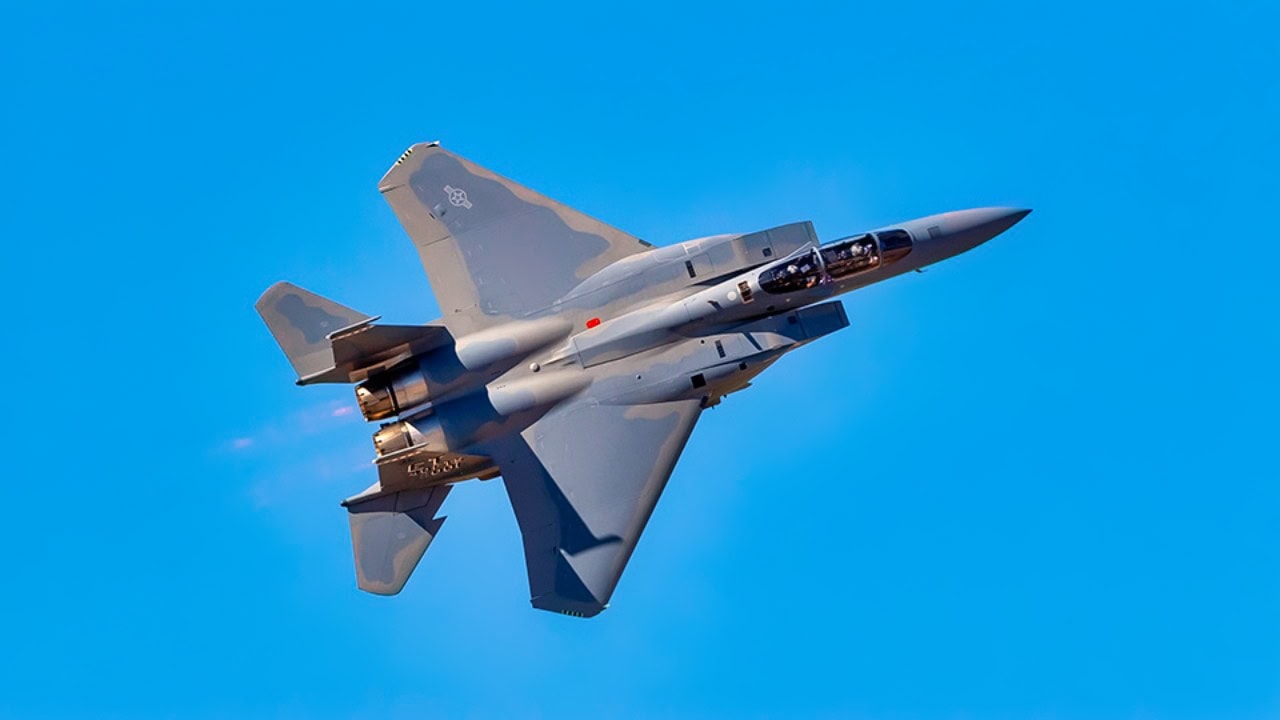The US Navy considered replacing the iconic F-14 Tomcat with a modified F-15N Sea Eagle for aircraft carrier operations during the 1970s. The F-15N was faster, lighter, more maneuverable, and cheaper than the Tomcat, which faced high maintenance costs and mechanical issues.
The TF-30 engines were a particular issue for the Tomcat’s maintenance crews. While this may incite the Tom Cruise crowd from “Top Gun,” the F-15 was just a better aircraft. However, the Navy’s marketing genius got them the popularity and publicity from the Top Gun film, which made the F-14 more popular than the F-15.
However, the Tomcat’s saving grace was its AIM-54 Phoenix long-range missile. Since the F-15N couldn’t carry the missile, the Navy decided to keep the F-14.
The 1970s Was A Different Era For Military Aviation
The Cold War years of the 1970s occurred before drones and stealth, and pilots won by outflying their opponents.
The aircraft were bigger, faster, and could fly at high altitudes to engage bombers and fighters.
Our foe at this time was the Soviet Union, which developed its weapons along the same path. China was not a threat at this time via air or sea power.
Why Did The Navy Think About Replacing the F-14 Tomcat?
The Tomcat was an outstanding fighter aircraft. At the time, it was the second-best fighter in the world. The only fighter that was better was the F-15.
The Tomcats had an issue with the engines. Although the engines provided plenty of power and could reach a speed of Mach 2.34, these powerplants caused plenty of headaches.
The Pratt and Whitney TF-30 engines, inherited from the canceled F-111B program, were prone to compressor stalls, flameouts, and fan blades coming apart, limiting the Tomcat’s agility and increasing maintenance demands.
The Navy learned that the engines were very maintenance-intensive, expensive, and time-consuming, which could compromise operational readiness.
The pilots were forced to fly more conservatively to keep the engines from flaming out. The engines’ shortcomings limited the Tomcat’s dogfighting capability, which the aircraft was designed for.
Pratt and Whitney worked these issues out, but the aircraft didn’t turn the corner until a switch was made with the introduction of the F-14B model, which featured more robust and reliable General Electric F110-GE-400 engines.
This upgrade significantly improved the Tomcat’s performance, enabling the aircraft to become an icon and extending its service life well into the 2000s.
The F-15N Sea Eagle
McDonnell Douglas had kept their ears to the ground. They knew that despite the F-14 being an outstanding fighter, it had its issues: the engines, maintenance costs, operational readiness issues, and so forth. The Tomcat was very expensive.
In today’s dollars, the US could buy three (3) F-35s for the price of a single F-14.
They were preparing for the opportunity to present their aircraft before the F-15s were even operational. In 1970, the Pentagon overreacted to a sighting of the Russian MiG-25 Foxbat, which the Russians had touted as being much scarier than it was. But this overreaction resulted in the F-15 Eagle.
The F-15 was everything the MiG was supposed to be and much, much more. It was a muscle car among VW Bugs. The Eagle’s top speed is Mach 2.4.
The F-15 has an incredible combat record. It has shot down 104 enemy planes and has not lost one aircraft due to another enemy aircraft.
The F-15N was the naval variant. Surprisingly, it already had a tail hook, but it needed to be beefed up for constant landings on carriers rather than just in emergencies.
The landing gear had to be replaced with a more rugged set that could withstand the abuse of carrier landings on a carrier.
If the F-15N was chosen, McDonnell Douglas was working on redesigning the aircraft’s wing and frame to hold the AIM-54 Phoenix missile.
Eventually, the Navy chose to keep the Tomcat, and make no mistake, the F-15 wasn’t a cheap plane either. However, it is an excellent case of “what if” the Navy decided to switch with the upgrades the F-15 has seen.
About the Author: Steve Balestrieri
Steve Balestrieri is a 19FortyFive National Security Columnist. He served as a US Army Special Forces NCO and Warrant Officer. In addition to writing for 19FortyFive, he covers the NFL for PatsFans.com and is a member of the Pro Football Writers of America (PFWA). His work was regularly featured in many military publications.

